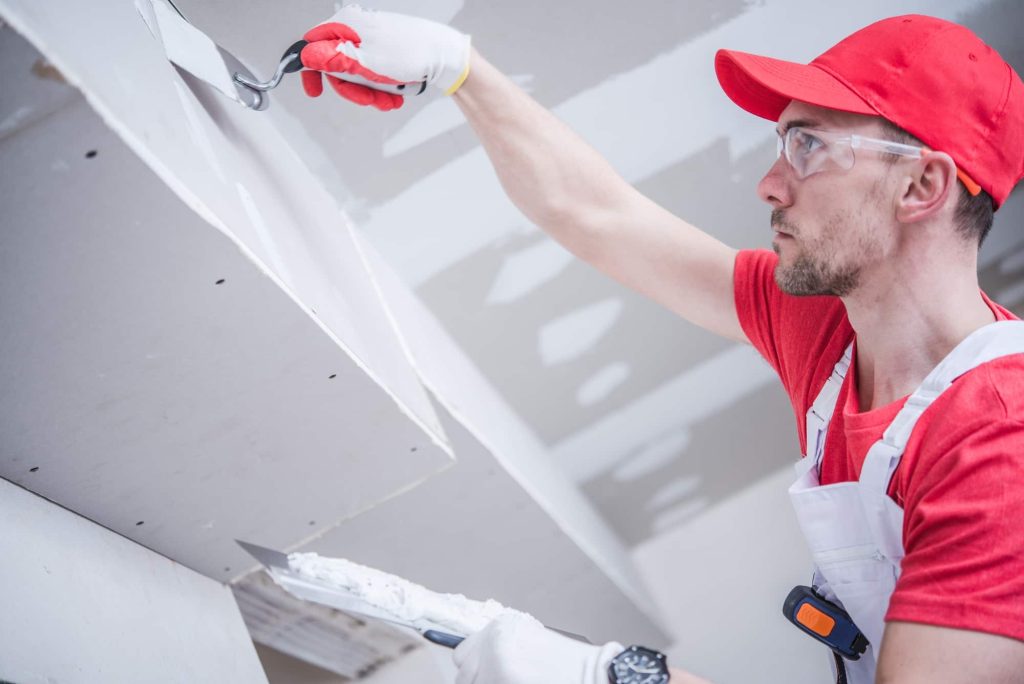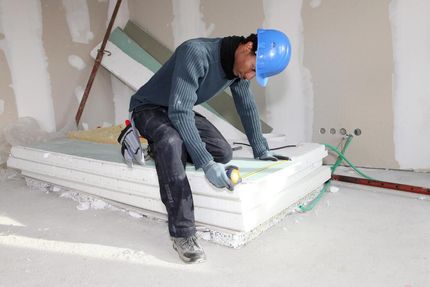Comprehensive Drywall Contractor Support for New Builds
Comprehensive Drywall Contractor Support for New Builds
Blog Article
Drywall Installment Made Easy: Tips for Perfect Results
Drywall setup is often regarded as an overwhelming job, yet with the appropriate method and expertise, it can end up being a convenient venture. Mastering methods for cutting, hanging, and completing drywall can significantly affect the end result.
Selecting the Right Products
Choosing the ideal materials for drywall installment is essential to attaining a durable and visually pleasing coating. drywall installation. The key component, drywall sheets, usually can be found in various thicknesses, with 1/2-inch sheets being typical for interior wall surfaces. For locations requiring additional wetness resistance, such as kitchen areas or washrooms, consider utilizing eco-friendly board or concrete board, which are particularly designed to endure moisture

In addition, choosing the ideal fasteners-- either nails or screws-- is necessary for protecting the drywall to the framework. Drywall screws are typically preferred for their holding power and minimized threat of standing out. Finally, consider the finishing touches such as primer and paint, which not just boost the appearance however also safeguard the drywall from dampness and wear.
Preparing the Setup Location
Prior to beginning the drywall installation process, it is necessary to prepare the installation area extensively. A clean work space minimizes the danger of damage to existing products and permits for effective motion during installation.
Following, evaluate the wall surfaces and ceiling for any imperfections, such as cracks, holes, or mold. Address these problems ahead of time; spot any type of damages and enable sufficient time for repairs to dry. In addition, ensure that electric outlets, buttons, and plumbing are effectively positioned and represented, as this will certainly influence drywall positioning.
Think about the ecological conditions as well. A stable temperature level and humidity degree are vital for ideal adhesion and performance of the drywall products. Utilize a dehumidifier or heating unit to develop appropriate conditions. if needed.
Trimming and Hanging Drywall
The trick to efficient drywall installment hinges on the exact cutting and hanging of the panels. Begin by measuring the area properly, thinking about any blockages such as electric outlets or windows. Use a straight edge and an utility knife to rack up the drywall along your measurements, then break it along the racked up line for a tidy break. For even more elaborate cuts, such as around outlets, a drywall saw can be used for precision.

Always function from the top down and left to right, guaranteeing that you keep a staggered pattern to improve security. Correctly hanging the drywall sets the structure for a smooth surface, inevitably bring about premium cause your drywall task.
Insulation and Mudding Techniques
While correct cutting and dangling of drywall establishes the stage, the next important step entails understanding taping and mudding strategies to ensure a smooth surface. Insulation is important for enhancing joints and preventing splits; it involves embedding tape into try this out the used joint compound (mud) Begin with a quality fiberglass or paper tape, applying the tape over the joint and pushing it right into the damp mud using a taping knife, guaranteeing no air bubbles stay.
When the tape is in location, use a thin layer of joint compound over the tape, feathering the sides to produce a smooth change to the drywall surface area. Enable this layer to dry completely before sanding it lightly to remove flaws. Repeat this process, using additional layers of mud as essential-- normally a couple of coats-- while progressively expanding the application area with each layer to accomplish a seamless appearance.
After the final layer dries, sand read the full info here the surface area with a fine-grit sandpaper up until smooth. sheetrock repair fort worth. Bear in mind to use a mask throughout sanding to stay clear of breathing in dirt particles. Understanding these taping and mudding methods is vital for accomplishing a professional-quality coating in your drywall installation
Completing Touches for Excellence
Achieving a remarkable drywall installment exceeds mudding and taping; it culminates in the ending up touches that boost the total appearance. These final actions are essential in ensuring a professional-grade finish that enhances the appearances of your area.
Begin by sanding the dried joint compound to produce a smooth surface. Make use of a fine-grit sandpaper and a fining sand block or pole sander for ideal control. Pay specific interest to sides and edges, as these areas have a tendency to require even more careful work. After sanding, wipe down the wall surfaces with a moist fabric to get rid of any kind of dirt particles, ensuring a tidy surface for painting.
Following, use a primer especially developed for drywall. This action is vital, as it aids seal the joint substance and provides a consistent base Related Site for the overcoat. When the primer dries out, inspect for any type of blemishes, and touch up as required.
Verdict
In verdict, effective drywall installation hinges on the careful selection of materials, extensive prep work of the installment location, and specific implementation of reducing and hanging strategies. Proficiency of taping and mudding procedures is essential for achieving a smooth finish.
Drywall installation is typically viewed as a complicated job, yet with the ideal strategy and expertise, it can come to be a workable undertaking.Picking the proper products for drywall setup is important to accomplishing a resilient and visually pleasing finish.Prior to starting the drywall installment process, it is vital to prepare the installation area extensively. Understanding these taping and mudding methods is vital for achieving a professional-quality finish in your drywall installment.
In verdict, successful drywall installation pivots on the cautious selection of products, detailed preparation of the installment location, and exact execution of reducing and hanging methods.
Report this page